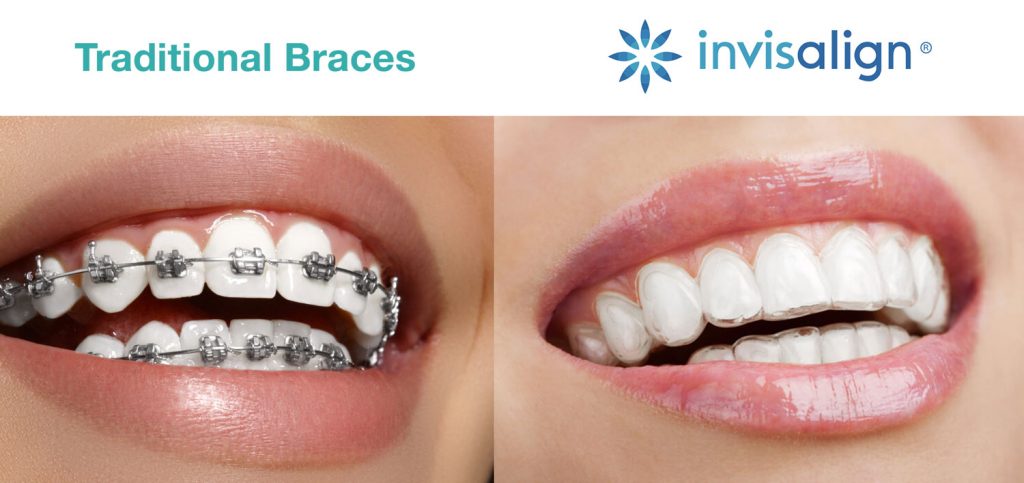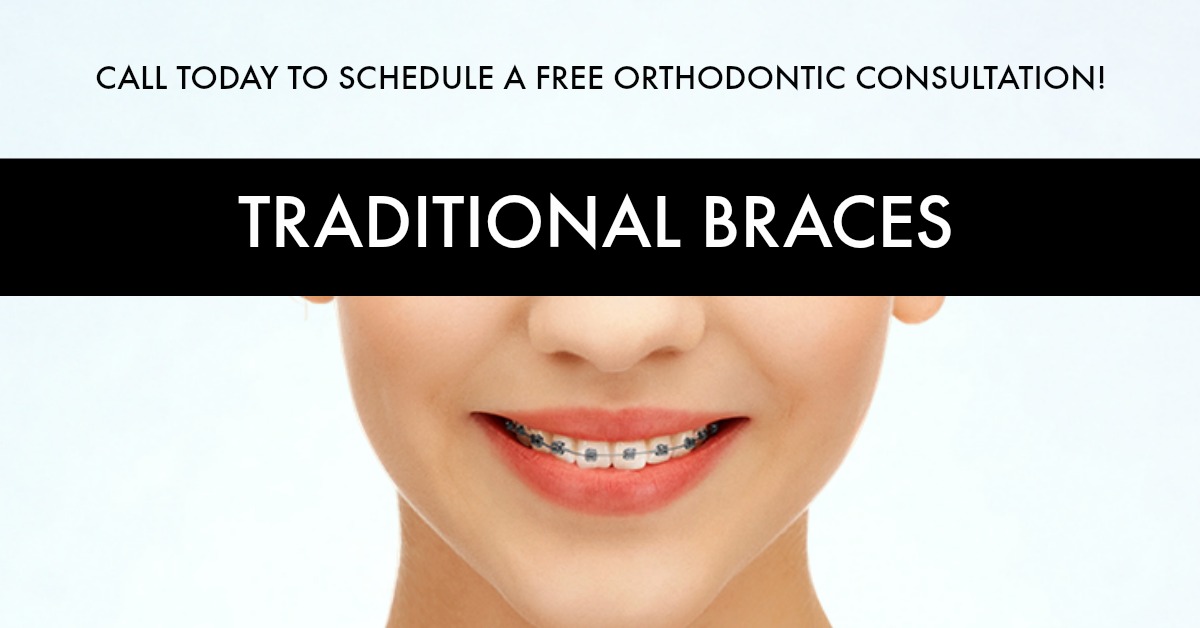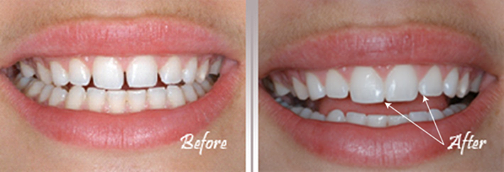- Navigation
- OUR OFFICE
- » MEET OUR DOCTOR
- » MEET OUR STAFF
- » OFFICE TOUR & INFORMATION
- SERVICES
- » FIRST OFFICE VISITS
- » CHILDREN DENTAL CARE
- » PREVENTATIVE CARE
- » COMPOSITE FILLINGS
- » PERIODONTAL
- » ROOT CANAL THERAPY
- » CROWN & BRIDGE
- » EXTRACTIONS
- » DENTURES
- » IMPLANT DENTISTRY
- » WHITENING
- PAYMENTS
- » INSURANCE
- » FINANCING
- » SCHEDULING
- » DENTAL EMERGENCIES
- » SPECIAL OFFERS
- NEW PATIENT
- CONTACT
INVISALIGN & ORTHODONTICS

INVISALIGN
Invisalign takes a modern approach to straightening teeth, using custom-made series of aligners created for you and only you. These aligner trays are made of smooth, comfortable and virtually invisible plastic that you simply wear over your teeth. Wearing the aligners will gradually and gently shift your teeth into place, based on the exact movements your dentist plans out for you. There are no metal brackets to attach and no wires to tighten. You simply pop in a new set of aligners approximately every two weeks, until your treatment is complete and you achieve the confident smile that you’ve always wanted. The best part about the whole process is that most people won’t even know you’re straightening your teeth.
How does he Invisalign Process works?
While Invisalign is really good at what it does, there are certain situations where Invisalign will not work very effectively, which is why it’s important to start your Invisalign treatment with a free exam at our office. The exam we will determine whether or not you are a good candidate for Invisalign treatment. A key to remember is that Invisalign works for teens and adults. Kids that still have baby teeth, or adult teeth that still have to grow in a lot do not qualify.
Once we determine you are a good candidate for Invisalign, we take records. The records include:
– Photographs of your teeth and face
– Dental impressions of your teeth
– Two x-raysOnce we have those records, We send them off to Invisalign with detailed instructions on how we want the teeth to be moved.
Next, Invisalign scans your impressions, so that they have a 3D model of your teeth in their computer. Their technicians will move the teeth step by step in the computer model to their final positions. We then log on and review the movements of the teeth. Typically, they get it pretty close, but we may have to instruct them on some fine point details of how I want the teeth to be moved. They make the changes, and then we review them again. We usually need to do this a couple of times to get the teeth exactly where I want them.
Once we are satisfied, I ask Invisalign to go ahead and make a series of trays (called aligners) and mail them to our office. It usually takes about 4 weeks from the time of the impressions until we get the trays back to our office. Then you are ready to start straightening your teeth!
You will wear a set of Invisalign trays for two weeks at a time. Each tray is manufactured so that the teeth are slightly straighter than the previous tray. The teeth will typically move 1/10mm per tray. So when you put a new tray in, the teeth in the tray are slightly straighter than your teeth are. This puts pressure on your teeth, and over the course of two weeks your teeth will move so that they match the tray.
There are some variations to consider in the process:
Most people that get Invisalign treatment have crowded front teeth, which means there is not enough room for the teeth to fit. We need to make more room somehow and we do this in several ways.
The first way, which is common on most people, we will have the trays do some expansion of the back teeth. This has several benefits including it makes more room to correct the crowding in the front and it makes for a broader smile, which also looks better.
The second way we will bring the front teeth forward slightly.
The third way we make more room to correct the crowding is to make some of the teeth slightly skinnier. This process is called interproximal reduction (a fancy way of saying we do a little bit of sanding or filing in between some of the teeth to make a little bit more room). This is not something that is noticeable and it stays well within the enamel of the tooth so that you don’t get sensitivity later.
On some people we use something called ‘attachments’ on the teeth. Attachments are small, tooth colored, bumps of plastic material (composite) that we attach to some of the teeth. Basically, what they do is to give a handle or gripping point for the aligner to click into place around. They help the aligner stay on better and they also can put pressure on the teeth in the direction we need to straighten them out. Not everyone needs to use attachments.
Sometimes we will also ask people to wear rubber-bands with their aligners. This is very similar to what we would ask a Patient to do with traditional braces. We will use these to rotate a particular tooth, or to help correct the bit if they are worn from the upper aligner to the lower aligner.
Once your aligners are in, we will ask you to wear your aligners close to full time. A major advantage of the Invisalign system is that you can take them out to eat. We also ask you to take them out to brush and floss. You will clean the aligners with a toothbrush at the time you are brushing. Typically, you will have your aligners in for about 20 hours a day. Wearing your aligners for this long will help the teeth move to their final position for that particular tray. If your teeth are not in final position when you go on to the next set of trays, they will not fit quite as well. This has a cumulative effect and by the time you get 3 or 4 trays down the line, they will not be fitting well at all.
It is not uncommon to get finished with your last tray and still have a few teeth that are still slightly out of position. We will explain this ahead of time, because it is pretty normal. If that is the case, we take a new set of impressions and have Invisalign make us some more trays to detail things. The process for this is identical to the process described above. The new trays will come back in 3-4 weeks and we will continue with straightening your teeth. Invisalign refers to these as refinement trays. There is NO ADDITIONAL FEE for this as it is part of the process. Most people need to get 1 set of refinement trays. Invisalign allows us to do this up to 3 times, but in our experience that is very rare.
Once we are done with your final trays, it is time for retainers. Most Invisalign Patients chose clear plastic retainers that look like Invisalign trays. Some people choose to get a fixed (permanent) retainer on the inside of their lower front teeth. This is a wire that goes across the inside of your lower front 6 teeth. The choice will be yours as to what kind of retainer we use. I ask most people to wear their retainers full time for 2 months and then we cut back to just while sleeping. Eventually, we get to the point where you are just wearing it a night or two a week. People often ask why we need to use retainers. The simple fact is that nothing about your body remains constant. It all changes as we age and that includes your teeth. Biting and chewing can put a lot of pressure on your teeth, and over time, these forces can move your teeth around.
Source: Invisalign

BRACES
Traditional braces consist of square brackets that are placed onto the teeth with an adhesive and connected by a wire. The wire is held into the bracket by rubber bands. They require periodic tightening so pressure can gradually straighten the teeth and align the jaw. Traditional braces are more effective at treating more complex cases as they give control to the dentist to move the teeth in small increments at a time.
How do Braces work?
In their entirety, braces work by applying continuous pressure over a period of time to slowly move teeth in a specific direction. As the teeth move, the bone changes shape as pressure is applied.
Braces are made up of the following components:
- Brackets are the small squares that are bonded directly to the front of each tooth with a special dental bonding agent or are attached to orthodontic bands. Brackets act like handles, holding the arch wires that move the teeth. There are several types of brackets, including stainless steel and tooth-colored ceramic or plastic, which are often selected because they’re less obvious. Occasionally, brackets are cemented to the back of teeth, in order to hide them from view.
- Orthodontic bands are stainless steel, clear, or tooth-colored materials that are cemented to the teeth with dental bonding agents. They wrap around each tooth to provide an anchor for the brackets. The clear or tooth-colored bands are more cosmetically appealing options but are more expensive than stainless steel. They are not used in all patients. Some people have only brackets and no bands.
- Spacers are separators that fit between teeth to create a small space prior to placement of orthodontic bands
- Arch wires attach to the brackets and act as tracks to guide the movement of the teeth. Arch wires can be made of metal or be clear or tooth-colored.
- Ties are small rubber rings or fine wires that fasten the arch wire to the brackets. They can be clear, metal, or colored.
- A buccal tube on the band of the last tooth holds the end of the arch wire securely in place.
- Tiny elastic rubber bands, called ligatures, hold the arch wires to the brackets.
- Springs may be placed on the arch wires between brackets to push, pull, open, or close the spaces between teeth.
- Facebow headgear is the wire gadget that is used to move the upper molars back in the mouth to correct bite discrepancies and also to create room for crowded teeth. The facebow consists of an inner metal part shaped like a horseshoe that goes in the mouth, attaching to buccal tubes, and an outer part that goes around the outside of the face and is connected to a headgear strap.Two bands on the upper teeth may have headgear tubes on them to hold the facebow of the headgear in place.
- Elastics or rubber bands attach to hooks on brackets and are worn between the upper and lower teeth in various ways. They apply pressure to move the upper teeth against the lower teeth to achieve a perfect fit of individual teeth.
How long will I have to wear the Braces?
The time required for braces varies from person to person, depending on the severity of the problem; the amount of room available; the distance the teeth must travel; the health of the teeth, gums, and supporting bone; and how closely the patient follows instructions. On average, however, once the braces are put on, they usually remain in place for one to three years. After braces are removed, most patients will need to wear a retainer all the time for the first six months, then only during sleep for many years.
How Often Will I Need to See the Orthodontist During Treatment?
Your orthodontist will want to see you about every month or so in order to make sure the braces are exerting steady pressure on the teeth. To create more tension and pressure on your teeth, the orthodontist will make adjustments in the wires, springs, or rubber bands of the braces. In some cases, braces alone aren't enough to straighten the teeth or shift the jaw. In these situations, an external appliance, such as headgear, may need to be worn at home in the evening or through the night.
Will Braces Be Painful?
Some of the adjustments your orthodontist may make to your braces may make your mouth feel sore or uncomfortable. When needed, over-the-counter pain relievers like Motrin or Tylenol can help relieve the pain. If you always experience a lot of pain after your braces are adjusted, talk to your Orthodontist about it; he or she maybe able to make the adjustments a bit differently.
What Care Can I Expect After the Braces Come Off?
After braces are taken off, your teeth will be thoroughly cleaned. Your orthodontist may want to take another set of X-rays and bite impressions to check how well the braces straightened your teeth and to see if any wisdom teeth have developed. If wisdom teeth are beginning to come in after braces have been removed, your dentist or orthodontist may recommend the wisdom teeth be pulled to prevent newly straightened teeth from shifting.
Your dentist or orthodontist will also fit you with a retainer. A retainer is a custom-made, removable or fixed appliance that helps teeth maintain their new position after braces have been removed. Retainers can also be used to treat minor orthodontic problems. The use of a retainer is a very important part of post-braces care. Retainers, which are typically made of rubber or clear plastic and metal wires that cover the outside surface of the teeth, need to be worn all the time for the first six months and then usually only during sleep. The time frame for wearing a retainer will vary from patient to patient. The reason why a retainer is needed is that even though braces may have successfully straightened your teeth, they are not completely settled in their new position until the bones, gums, and muscles adapt to the change. Also, after long periods of time, teeth tend to shift.
© 2012-2017 HQNguyen.com, All Rights Reserved. Designed by Web Tech Enterprise, LLC.


